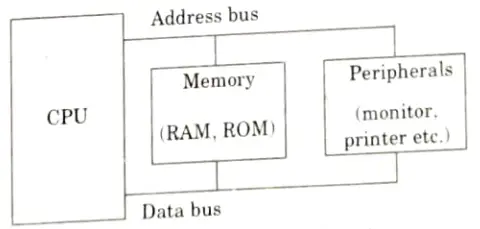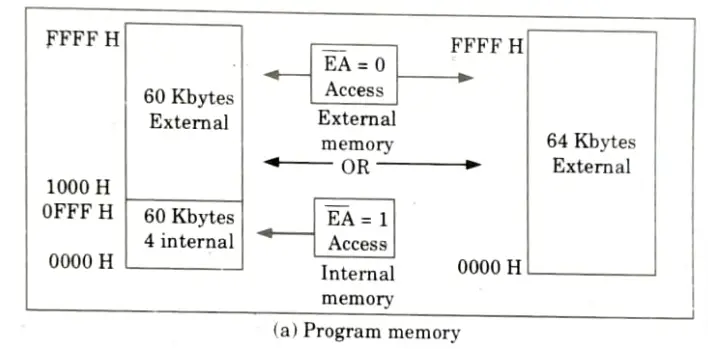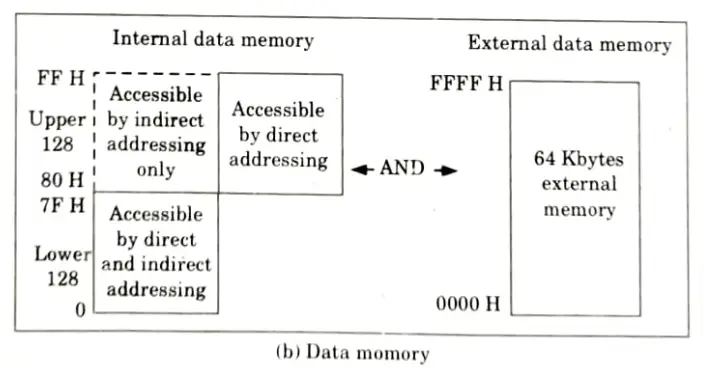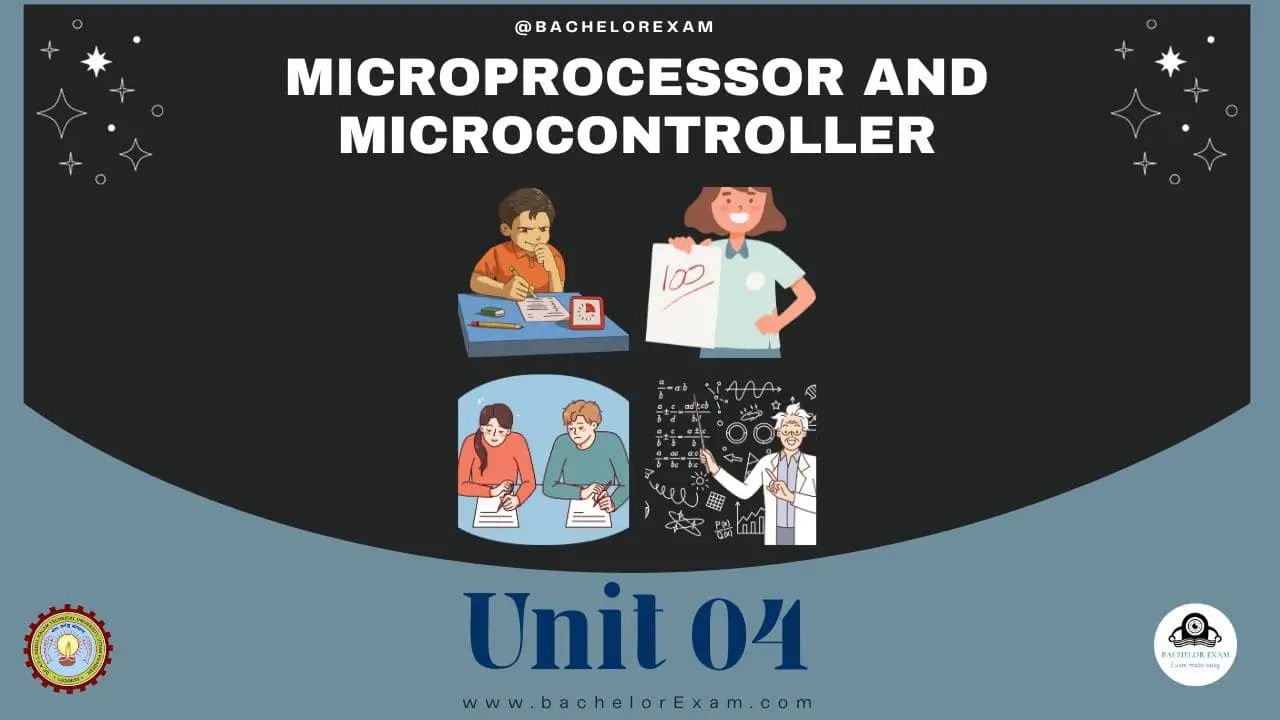Use the essential, commonly asked questions from Quantum Notes to improve your study for the Aktu Btech Microprocessor and Microcontroller exam. Improve your comprehension today to ace your tests! Unit-4 8051 Microcontroller Basics
Dudes 🤔.. You want more useful details regarding this subject. Please keep in mind this as well. Important Questions For Microprocessor and Microcontroller: * Aktu Quantum * B.tech-Syllabus * Circulars * B.tech AKTU RESULT * Btech 3rd Year * Aktu Solved Question Paper
Q1. Draw and explain the block diagram of computer.
Ans.
- 1. The internal working of every computer can be broken down into three parts: CPU (Central Processing Unit), memory and I/O (Input/Output) devices as shown in Fig.



- 2. The CPU’s job is to execute (process) data that has been stored in memory.
- 3. The keyboard and video display are examples of I/O devices that serve as a channel of communication with the CPU.
- 4. A bus, or group of wires, connects the CPU to the memory and I/O. Inside a computer, information is transported via a bus.
- 5. There are three different sorts of buses in every computer: an address bus, a data bus, and a control bus.
- 6. The decoding circuitry locates the device once the CPU transfers the address (in binary) to the address bus. The CPU then makes use of the data bus to either receive data from or transmit data to that device.
- 7. The control buses are used to transmit read or write signals to the device to let it know whether the CPU is sending or receiving data.
- 8. Among the three buses, the data bus and address bus work together to establish a CPU’s capabilities.
Q2. List some important features and architecture consideration of an embedded system.
Ans. A. Important features:
- 1. Embedded systems carry out pre-programmed tasks and have a certain set of specifications.
- 2. These are programmable hardware devices that run on programmable hardware chips.
- 3. Unlike computers, which are employed for a variety of tasks, embedded systems only do one or a small number of unique tasks.
- 4. Embedded systems are smaller components of a bigger machine that performs a certain activity.
- 5. Embedded systems may not have any user interface at all or they may have extremely sophisticated graphical interfaces. The device’s intended use or function will determine most of the outcome.
- 6. Simple embedded systems use LEDs, buttons or LCD displays with simple menu options.
B. Architecture considerations:
- 1. An embedded system’s architecture is a generalization of the embedded device, which means it is a generalization of the system.
- 2. An embedded system is instead depicted as a composite of interacting parts for the hardware and software components.
- 3. Architectural components may be present outside to the embedded system and communicate with internal components or they may be internally integrated into the embedded device.
Q3. Draw the functional block diagram of an 8051 microcontroller.
Ans.
- 1. The 8051 microcontroller contains 128 bytes of RAM, 4 Kbytes of on-chip ROM, two timers, one serial port, and four ports (each 8-bits wide) all on a single chip. It is also referred as a “system on a chip”.
- 2. The 8051 is an 8-bit processor, meaning that the CPU can work on only 8-bits of data at time. Data larger than 8 bits has to be broken into 8-bit pieces to be processed by the CPU.
- 3. The 8051 has a total of four I/O ports, each 8 bits wide as shown in Fig.



Q4. Explain the memory organization in 8051 microcontroller.
Ans. 1. Fig. shows the basic memory organization for 8051. It can access up to 64 K program memory and 64 K data memory. The 8051 has 4 Kbytes of internal program memory and 256 bytes of internal data 1 memory.
Program Memory: Program Memory (ROM) is used to store programmes (CODE) permanently while they are being run. The memory can only be read. Constant variables may also be stored in programme memory, depending on the compiler settings. Only programmes kept in programme memory are executed by the 8051.
Internal Data Memory:
- 1. Depending on the 8051 variant, up to 256 bytes of internal data memory are accessible. The first 128 registers, or the addressing space from 0 to 7F H, are the user-accessible locations. This portion of RAM is separated into numerous blocks.
- 2. The internal data memory’s first 128 bytes are directly and indirectly addressable. Only indirectly may the top 128 bytes of the data memory be addressed.
External Data Memory:
- 1. Compared to internal data memory, external memory access is slower. The amount of external data memory is up to 64 Kbytes.
- 2. A number of 8051 devices have on-chip XRAM (External RAM) memory that may be accessed using the same commands as the conventional external data space. This XRAM area, which overlays the external memory space, is normally activated by properly setting the SFR register.






Q5. Enlist the methods of memory address decoding and explain any of them.
Ans. There are three methods of memory address decoding.
- i. Using the 74LS138
- ii. Using programmable logic
- iii. Using simple logic gates:
- 1. The simplest method of constructing decoding circuitry is the use of a NAND gate. The output of a NAND gate is active low, and the CS pin is also active low, which makes them a perfect match.
- 2. In cases where the CS input is active high, an AND gate must be used. Using a combination of NAND gates and inverters, one can decode any address range.
- 3. An example of this is shown in Fig. which shows that A15- A12 must be 0011 in order to select the chip.



- 4. This results in the assignment of addresses 3000 H to 3FFF H to this memory chip.
Q6. Show the connection of an 8051 to a single 256K x 8 NV-RAM chip.
Ans. 1. The 8051 support only 64 Kbytes of external data memory since DPTR is 16 bit.



- 2. To solve the problem where we need a large amount of memory to store data (for example, 256 Kbytes), we can connect A0-A15 of 8051 directly to the external memory’s A0-A15 pins, and use some of the P1 pins to access the 64 Kbyte blocks inside the single 256 Kx 8 memory chip, as shown in Fig.



Important Question with solutions | AKTU Quantums | Syllabus | Short Questions
Microprocessor and Microcontroller Btech Quantum PDF, Syllabus, Important Questions
| Label | Link |
|---|---|
| Subject Syllabus | Syllabus |
| Short Questions | Short-question |
| Question paper – 2021-22 | 2021-22 |
Microprocessor and Microcontroller Quantum PDF | AKTU Quantum PDF:
| Quantum Series | Links |
| Quantum -2022-23 | 2022-23 |
AKTU Important Links | Btech Syllabus
| Link Name | Links |
|---|---|
| Btech AKTU Circulars | Links |
| Btech AKTU Syllabus | Links |
| Btech AKTU Student Dashboard | Student Dashboard |
| AKTU RESULT (One VIew) | Student Result |
